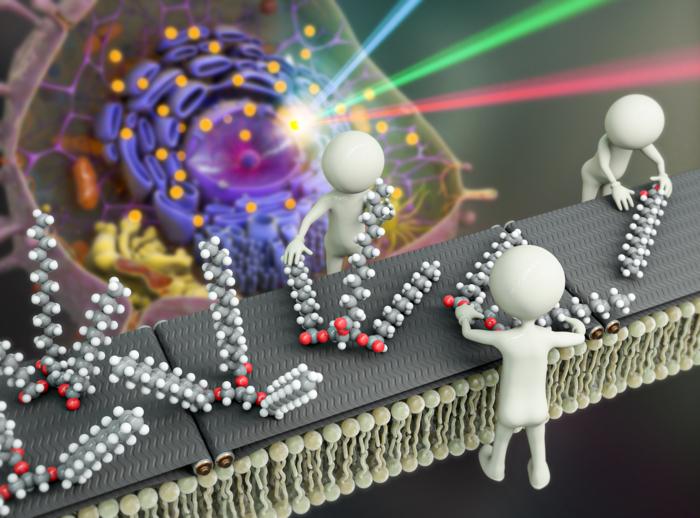Lipid droplets (LDs) are organelles in eukaryotic cells, consisting of pockets of triglycerides encapsulated in a monolayer of phospholipids. For a long time, they have stood as organelles whose only purpose was to store excess energy in the form of neutral lipids. Only recently, researchers discovered that they are actively involved in regulating lipid toxicity and cell communication, as well as their correlation with prevalent diseases like obesity and non-alcoholic fatty liver disease. Understanding the functions of LDs is, therefore, key to the diagnosis and treatment of these conditions.
Traditionally, cells are stained with lipophilic dyes and fluorescence microscopy is employed to study LDs within cells. However, this method presents several limitations, such as the photobleaching of dyes, which restricts the duration of LDs' observation to very short time windows. Another limitation is the fluorescent dyes themselves. Currently, conventional fluorescent dyes target only the hydrophobic environment within LDs, so it is impossible to analyze the composition and quantify the neutral lipids accurately.

The cover artwork for the paper visually represents the cellular process wherein fatty acids undergo synthesis into neutral lipids through various enzymes. (Image Credit: Institute for Basic Science)
Unlike previous fluorescence microscopy-based methods, the 2C-IPM technology relies on infrared spectroscopic (IR) and does not require the use of fluorescent dyes. The new approach directly monitors neutral lipids within LDs by detecting changes in IR absorbance. Remarkably, it allows researchers to monitor the synthesis of neutral lipids within individual LDs in living cells over a long period.
In the study recently published in Chemical Science, the team investigated the synthesis of neutral lipids in cells exposed to excess fatty acids. They could distinguish freshly synthesized neutral lipids from pre-existing neutral lipids within cells by subjecting deuterium-labeled fatty acids, which have distinct spectroscopic properties from non-deuterated forms. The results demonstrated that excess fatty acids led to lipid toxicity, and cells responded by increasing the synthesis of neutral lipids.
"This study serves as a fundamental example demonstrating the possibility of long-term research on lipid droplets and internal neutral lipids in living cells. The analytical method established in this research can be applied to the diagnosis and treatment of diseases closely associated with lipid metabolism, such as non-alcoholic fatty liver disease," explains Park Chanjong, the study's lead author.
"By successfully observing the process of neutral lipid synthesis in living cells, we have laid a new foundation for studying the functions of lipid droplets within cells at the molecular level. This method is expected to be widely used in the investigation of various cellular metabolic phenomena," emphasizes Cho Minhaeng, director of the IBS CMSD and corresponding author of the paper.
Original Publication:
C. Park, et al.: Monitoring the synthesis of neutral lipids in lipid droplets of living human cancer cells using two-color infrared photothermal microscopy. Chemical Science (2024); DOI: 10.1039/D3SC04705A



